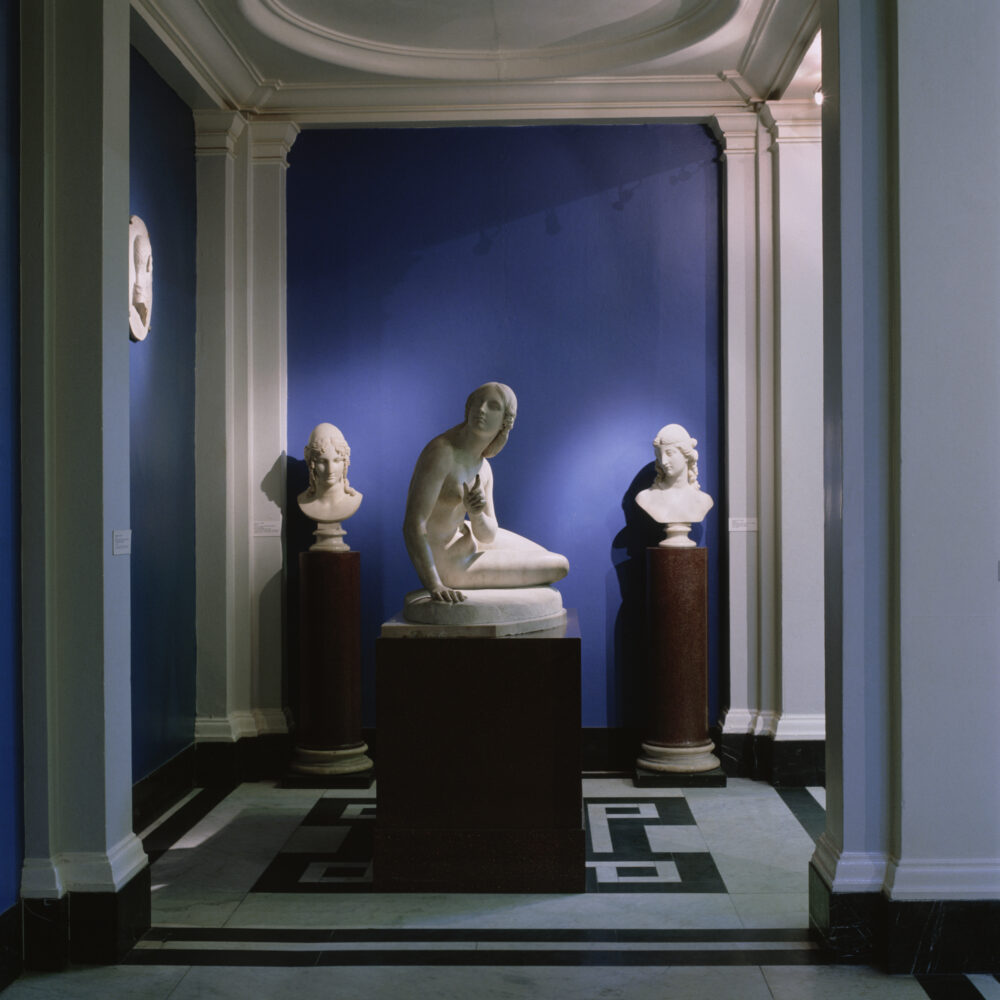Begun in 1993 during a visiting professorship in Sweden, Academies interrogates the history of ideas that underpin western aesthetics. Within the spaces of the Royal Academy Schools in London, the Royal Academy of Art in Stockholm, and the Repin Institute in St Petersburg, Knorr reflects upon the relationship between the production of western art in the academy and the transmission and reproduction of such ideas through the museum. The series explores the foundation myths of European fine art culture and the link to national identity and patrimony.
Fine art academies were formed throughout Europe from the 16th century by decree or Royal patronage in order to promote a sense of national culture. Advocating an intellectualization of the gaze (through drawing, perspective and geometry) and a study of the liberal arts, such institutions aimed to differentiate the academic artist from the mechanical and technical work of the artisan. Academies sets up a critical gaze, examining the remnants of this Eurocentric classical aesthetic fostered within the academy and still displayed in European museums. Knorr searches for ways to trouble the realist endeavor: through captioning and use of titles and through the framing and presentation of the photographic object, using brass plaques to parody an academic style.
Taxidermised creatures and props create a dialogue with the history of each of the sites. Animals from natural history collections are placed amid old master paintings; monkeys cavort within the sculpture collection of the Musee d’Orsay. Referencing the 18th century trope of the ape-as-painter, Knorr links the theme of the academy to the issue of mimesis and imitation, whilst the mandrill ape holding Eduard Zitsel’s book Le Genie becomes “The Art Functionary” looking for the next artistic genius to promote. Wolves, parrots and apes roam freely around the museum and the academy. These taxidermied specimens invite a suspension of disbelief when photographed, interrogating the boundaries between the human and nonhuman. Unabashedly stuffed, they appear at their most alive in the photograph: a simulacrum of ‘life’ through the cadaver of an animal.
In wandering freely around these spaces, the animals escape the picture frame and displace the environment that nonetheless defines them, an anarchic moment within the frozen interior of the museum. Further transgressive elements are introduced into the scenes. A black hand caressing the inanimate beauty of Canova’s nymph transgresses the taboo of touch, just as a woman roaming through the Royal Academy breaks the rules of a rigidly patriarchal institution. The questions Knorr raised in the 1990’s still seem pertinent. What is the status of women and ethnic minorities in the academy in the 21st century? Are academies and museums still privileged sites promoting national identity?
Works from Academies were included in Knorr's monograph, 'Connoisseurs & Academies', published by Kehrer in 2024.




















